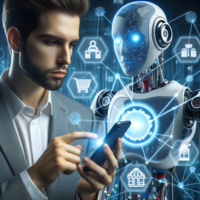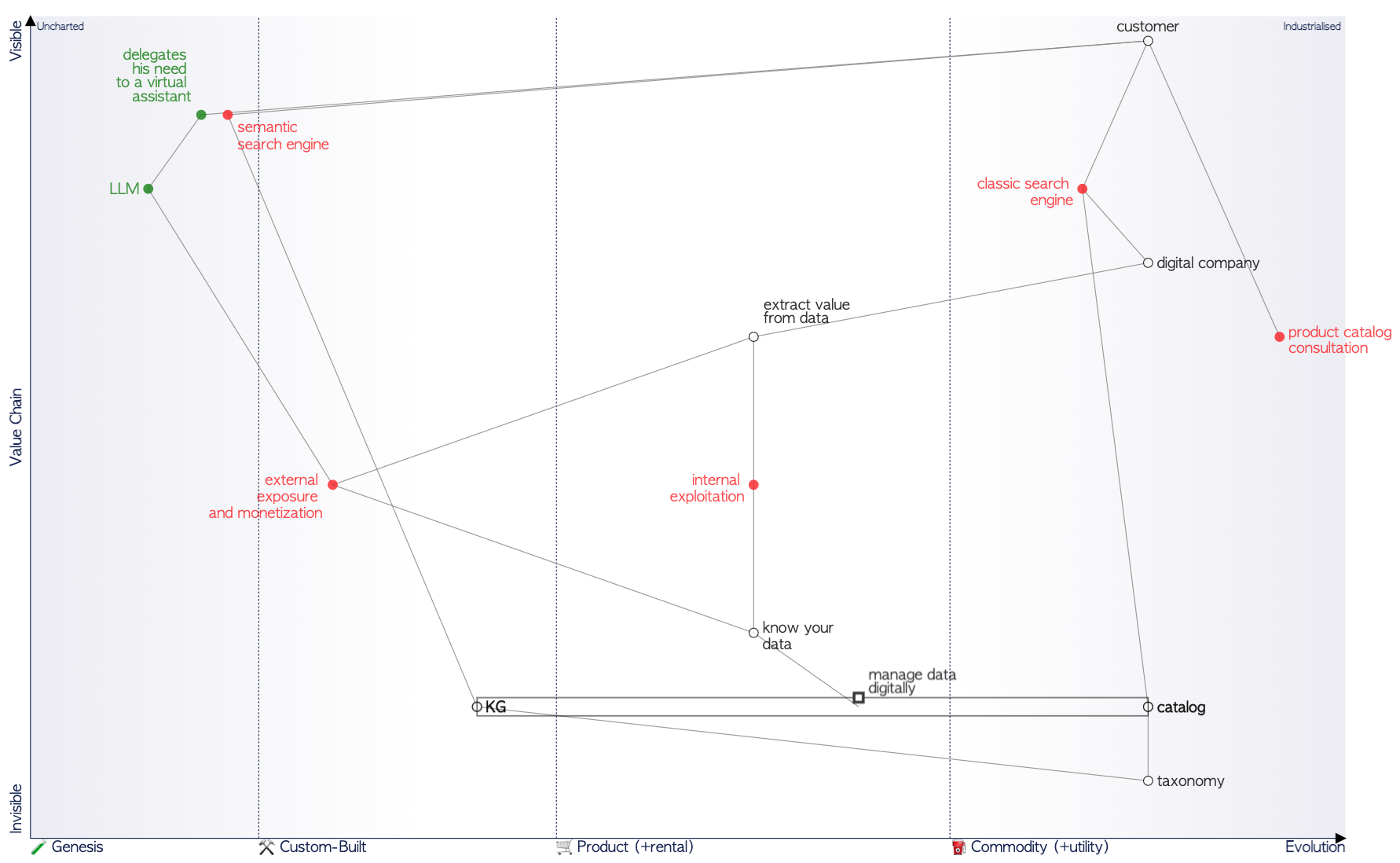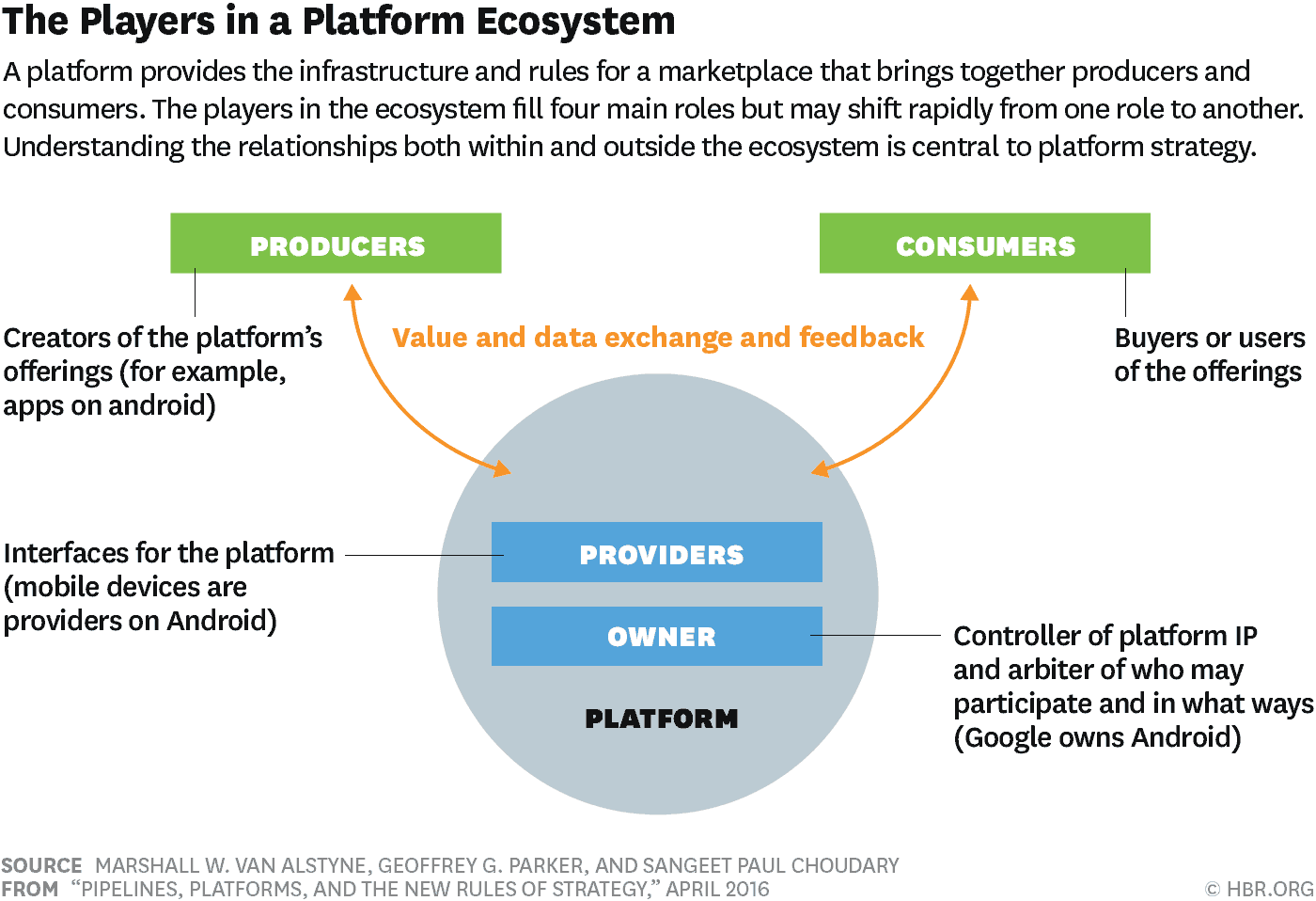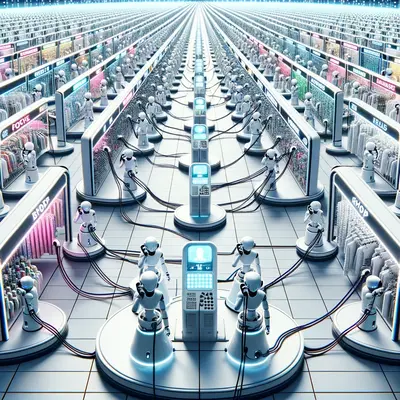The Dawn of LLM-Powered personal assistants: pioneering a new platform economy
Introduction
The platform economy is an economic environment in which digital platforms act as intermediaries, connecting various stakeholders and enabling them to transact with one another seamlessly. These platforms harness the power of network effects, creating value by facilitating exchanges between users.
Consider a digital marketplace as an example:
- They act as a connection hub between sellers (supply) and buyers (demand).
- They leverage the network effect: as more people use the marketplace, the value of the platform increases for all users. A larger selection of products attracts more buyers, and more buyers attract more sellers.
- They derive value from technology: the platform economy is largely enabled by digital technology, and marketplaces leverage this technology to operate, scale, and improve their platforms over time.
In recent times, advancements in Language Models like ChatGPT, powered by Large Language Models (LLMs), have paved the way for the development of highly intuitive and capable personal assistants. These LLM-powered assistants can become an evolution of the platform economy. A platform where digital storefronts, service providers, and users converge, creating a symbiotic ecosystem.
In this article, I will explain how the plugin mechanism of ChatGPT is a keystone in the construction of the platform.
In the first part, I will explain a fictional use case from the point of view of the buyer. In the second part, after a recap of the notion of pipeline and platform, I will expose how a supplier can use the plugin mechanism to meet the platform requirements. I will insist on the communication and standardization part, discussing intermediate representation and human language.
Note my experience is mainly focused on ChatGPT, therefore I may use ChatGPT instead of LLMs.
Example use case
Consider a scenario where one needs to prepare for a dinner engagement with a budget of $100. The dinner is slated for 8pm, with a one-hour drive, and it’s currently 2pm.
The aim is to find suitable attire within budget, and purchase it from a nearby store to make it to the dinner on time.
Here’s where an LLM-powered assistant like ChatGPT comes into play. The assistant, leveraging a network of digital platforms, can help identify clothing options, compare prices, and locate a nearby store, all while ensuring the user stays within budget and timeline.

Rationale
With my colleague Nicolas, we conducted the exercise to create a (Wardley) map for this need.
The fundamental requirement is about finding a good.
Given Nicolas’s background in knowledge graphs and semantic search, we initially explored how these elements could address the use-case.
Subsequently, we considered the potential role of personal assistants in this context.
Below is the resulting map:

We then asked: Does the LLM need to be in-house for the retailer, or can it operate independently using the data provided by the retailer? The colors indicate the components owned by the retailer (note, I am not necessarily stating they should remain in-house, especially the commodities). Components owned by the end-user are shown in green.
Surprisingly, after a discussion on the map, it became clear that the LLM instantiation might be more beneficial if kept out of the context. This is logical, as the computing power required to run the LLM is substantial and should probably remain with an external company that specializes in building personal assistants.
So what could be the future of the personal assistant and its associated business.
My guess is that it is a next generation platform model.
Let’s assess the current technical landscape and how it might evolve in the future based on the technical elements that exist today.
Platform?
Let’s review the fundamental principles of platforms, before going further.
Platform Economy: From Pipelines to Platforms
A platform efficiently connects producers and consumers, allowing them to generate value through their large-scale interactions. While this might seem like a familiar concept, Sangeet Paul Choudary introduces an additional perspective: the notion of a pipeline.
Its model is presented in the HBR paper: Pipelines, Platforms, and the New Rules of Strategy,
In a glimpse, in the business context a pipeline represents a linear and unidirectional transformation that enables a producer to create value and deliver it to the consumer. Essentially, it’s the traditional system of goods or service providers. For instance, as described in the HBR document, Apple provides value by creating products and selling them to consumers, transitioning from a set of components to a finished product through a series of pipelines. These pipelines have been revolutionized by technology, impacting three main pillars:
- Facilitating mass production.
- Encouraging mass consumption (e.g., the television’s influence on consumer behavior).
- Easing international exchanges and transactions, promoting system connectivity.
However, the advent of the Internet and digital technology has further evolved these pillars:
- Production tools can be more easily distributed. Previously, to produce information, one needed to be a newspaper. Now, anyone can produce information on platforms like Twitter or LinkedIn.
- Digitalization has brought about personalized usage patterns, offering consumers tailored products.
- The Internet has influenced mass consumption by affecting prices, as seen with giants like Amazon and Alibaba.
The platform’s main idea is to transform value creation. Its value lies in effectively linking producers and consumers. Taking Apple’s example from the HBR paper, the App Store platform facilitates mass app production for a large consumer base. It shifts from mass production linked to mass consumption to distributed production connected to personalized consumption. The platform provides an interface easing the onboarding of new producers while also ensuring governance by implementing rules for both producers and consumers, ensuring, for example, that App Store applications are safe for users.

The platform for LLM?
Given the previous definitions, the notion of pipeline in the context of LLM may refer to the value creation that arises from the transformation of data into a finished product, such as a conversational agent.
However, the concept of plugin is somewhat disruptive, reminiscent of what the App Store offers. Plugins serve as interfaces to the product, streamlining structured interactions between users and suppliers through the agent. This evolution towards mass content production positions ChatGPT as a platform.
In the use-case discussed earlier, numerous suppliers play a part in satisfying the user’s needs. Stores and brands function as content providers. They offer data about their merchandise, detailing price, availability, and locale.
To convey the necessity of a dual-implementation based on a type of Intermediate Representation, plugins operate by generating an intermediate representation that captures both structured API engagements and user-friendly explanations. This combination guarantees a continuous data flow, making it intelligible for both the platform and its users.
As a conclusion:
Plugins enable mass (content) production, which when combined with the mass consumption of individuals relying on a personal assistant, gives rise to a new platform.
New Challenges:
As this ecosystem expands, new challenges akin to the SEO challenges encountered by search engines will arise. The concept of Prompt Engineering and Automatic Choice Optimization will become pivotal. This involves refining how inquiries are handled and answered by the LLM-powered assistants, guaranteeing precision, pertinence, and efficacy in addressing users’ demands.
The upcoming challenge for content providers will be to be selected by the artificial intelligence to resolve the issues presented by the client. This might necessitate a thorough comprehension of the platform’s foundational workings.
Conclusion:

The advent of LLM-powered personal assistants like ChatGPT heralds a new era in the platform economy, merging the digital and physical realms in a user-centric ecosystem.
By integrating digital storefronts, service providers, and users, a new level of value creation and exchange is realized, redefining how we interact with the digital world around us.
Why relying on a platform and not becoming a platform is a new challenge for providers? The problem is that, today, only the digital giants possess the resources to run these models at scale.